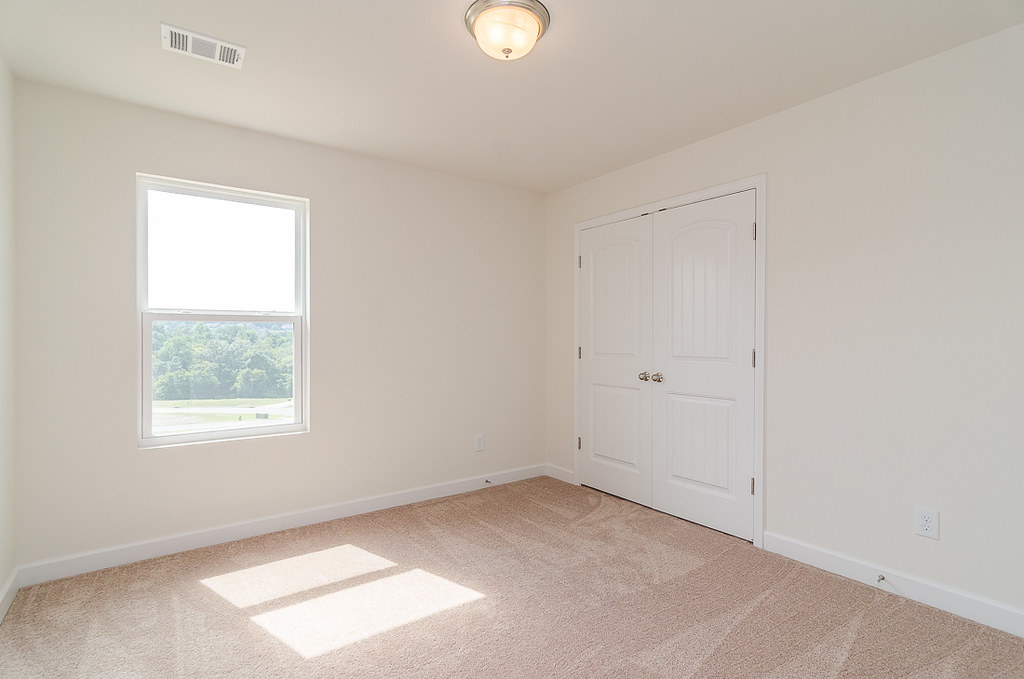Designing a bathroom can be challenging, especially when searching for ideas that accommodate both a shower and a bath in a small space. Balancing size constraints with practical building considerations adds complexity to the task. One effective way to maximize space and enhance the feeling of openness is to incorporate a walk-in shower.
1. Corner Showers for Small Bathrooms

Make the most of the corner space by installing a corner walk-in shower. This design effectively utilizes a corner of the room, often featuring a triangular shape that enhances the overall space in the bathroom. Curved styles are also available, offering a bit more room inside the shower while maintaining a sleek look.
2. Color Zoning to Extend Space in the Bathroom

Color zoning in architecture involves dividing spaces using specific colors or contrasts. This technique enhances visual appeal, designates areas, and alters perceptions of dimensions and proportions.
For example, color zoning can make the space appear larger.
By contrast, using light-colored tiles that contain white, grey, and pastels in the shower only helps to achieve an airy feeling. At the same time, using a different color of a plain tile or a more interesting pattern on the floor can divert attention from the dimensions of the room towards the substance of the design rather than the maximal area that can be used.
3. Shared Shower Wall
Using one wall for dual purposes is an ideal solution for a small bathroom. Design one side for a walk-in shower and the other for a sink or compact vanity. By installing the same tiles throughout the bathroom, the multipurpose wall maintains a cohesive look, creating a seamless transition regardless of which side you’re on.
3. Form Lines with Texture Imposition and Patterns Application

Strategically using colors and patterns in a small bathroom can enhance the illusion of space, especially around a walk-in shower.
When the shower area features a different color or pattern, it creates a visual separation from the rest of the room. This contrast makes the shower more pronounced and emphasizes the overall space in the bathroom.
A wall, such as the one behind the vanity or the one opposite the shower, can also be set aside as an accent wall. On this wall, one can paint a bold color or display a captivating designer’s pattern to make this wall more appealing and add one dimension to the wall.
The wall could be devoid of any furniture or make-up accessories, thus giving Makoun a clear view of the wall-less harshly.
4. Embrace Minimalism with a Simple Shower Screen
Sometimes, less is more. A straightforward, frameless shower screen can effectively create a sense of spaciousness in a bathroom. By eliminating framing and patterns around the shower, the continuity of the space is enhanced, minimizing the perception of separate zones and making the room feel larger.
While this design promotes openness, it can also feel somewhat flat. To counter this, consider adding bathroom accessories that introduce depth and visual interest to the overall design.
5. Create a Focal Point with Bold Floor Tiles
Divert attention from the small size of your bathroom by incorporating a focal point, such as patterned floor tiles. Bold tiles with striking designs can serve as a work of art, enhancing the bathroom’s aesthetic. Consider extending the tile from the walk-in shower floor into the rest of the room and even partially up the walls. To create cohesion, use one of the colors from the pattern in other elements, like the vanity, to tie the space together.
6. Oversized tiles used in the Walk-in Shower
Installing large tiles in the walk-in shower can help make the bathroom appear more spacious. Opt for light-colored tiles, such as whites, creams, or light greys, as they reflect more light and enhance the illusion of space.
Using large format tiles on the walls and floor minimizes the amount of grout lines, thus improving the visual and spacious effect.
To enhance this even more, carry the same tiles from the shower onwards out into the rest of the bathroom. This means there are no visual barriers to the shower and the rest of the bathroom, and since there are no interruptions, there are no external barriers heightening the real emotive basis, making the room feel more open.
7. Curved Shower Frame for Walk-in Shower
A curved shower frame can amplify the notions of space in a small bathroom, which enhances visual openness and fluidity. The structural configuration of the bathroom facilitates a better interrelationship between the shower and other parts of the bathroom.
A curved frame has the advantage of providing clear sights without angles and corners, hence, free space flows within the environment space. On the other hand, the softer lines envisaged within the structure of the curves evoke a sense of well-being. In the end, this property features numerous other benefits, which makes it fun, and the very perception in reality falls into the very good manifold.
8. Maximizing Unique Architectural Features in Your Shower Design
If your home features unique architectural shapes, consider utilizing them for your shower space. Curved or angled walls can enhance the design by creating depth and visual interest without occupying extra floor space. These shapes are especially effective in corners, helping to make use of otherwise unused areas.
By tucking a small shower within a curved or angled wall, you can save space for the rest of the bathroom while creating an intimate showering experience. This approach not only maximizes functionality but also adds a distinctive touch to your bathroom’s design.
9. Dividing Wall Between Toilet and Shower

A half-dividing wall between the toilet and a walk-in shower can enhance the feeling of space in a bathroom. This design creates a partial enclosure that maintains separation while keeping the area open.
By defining different functional zones, the half wall adds organization without making the space feel confined. It clearly distinguishes the toilet and shower areas, contributing to a more structured layout.
Additionally, this design is practical and easy to maintain, eliminating the need to clean a shower screen after every use.
10. Embracing Industrial Design in a Small Bathroom
A small bathroom doesn’t mean sacrificing style. Industrial design is a fantastic choice that can help create the illusion of a larger space.
Elements like exposed pipes, minimalist fixtures, and sleek lines can give your bathroom a more expansive feel.
11. Positioning Your Walk-In Shower for Natural Light
Positioning your walk-in shower near a window or under a skylight can enhance your bathing experience with natural light. You can enjoy the sun during the day and the stars at night.
A clerestory window and glass door allow light to flow into the bathroom, creating an inviting atmosphere.
This placement makes the shower feel like a separate space. It keeps sight lines clear and maintains an open flow in the small bathroom.
12. Designing a Doorless Walk-in Shower for Unique Spaces
Consider a doorless walk-in shower that utilizes the architectural quirks of your small bathroom. By tucking the shower beneath an eave, homeowners can effectively incorporate it into tight spaces. This clever design maximizes space while making room for a separate toilet compartment—a luxury typically seen in larger bathrooms. Embracing these unique features can turn your small bathroom into a functional and stylish retreat.



Hi, this is a comment.
To get started with moderating, editing, and deleting comments, please visit the Comments screen in the dashboard.
Commenter avatars come from Gravatar.